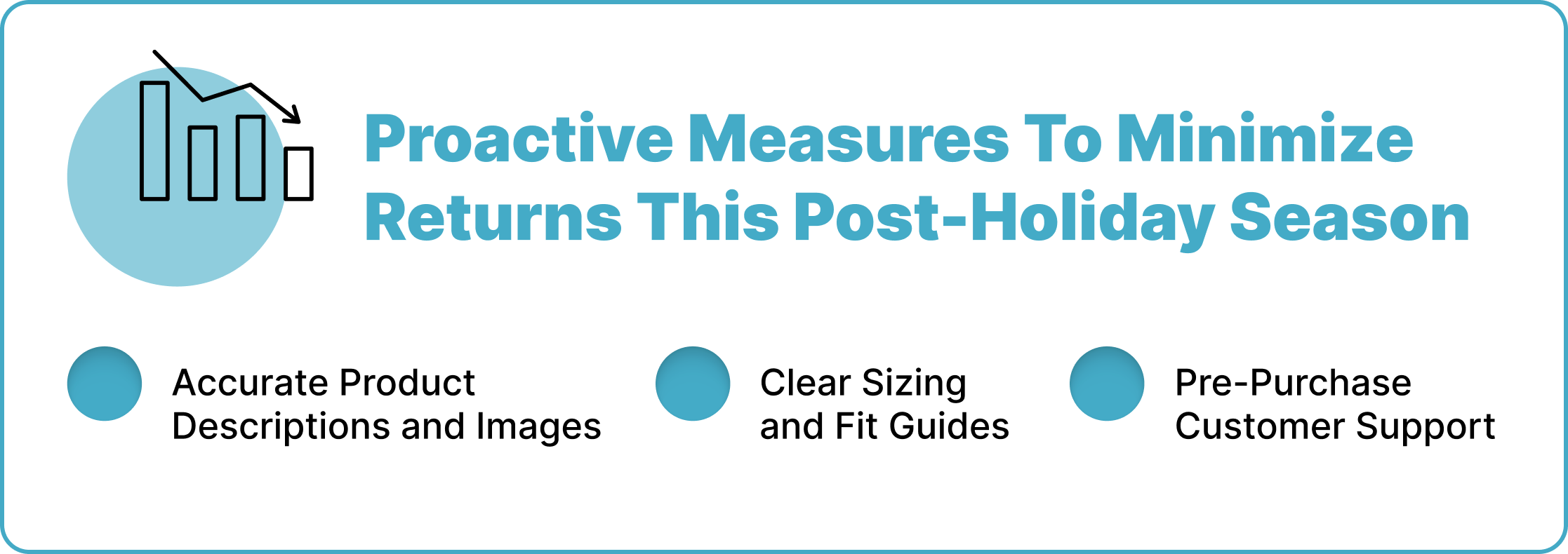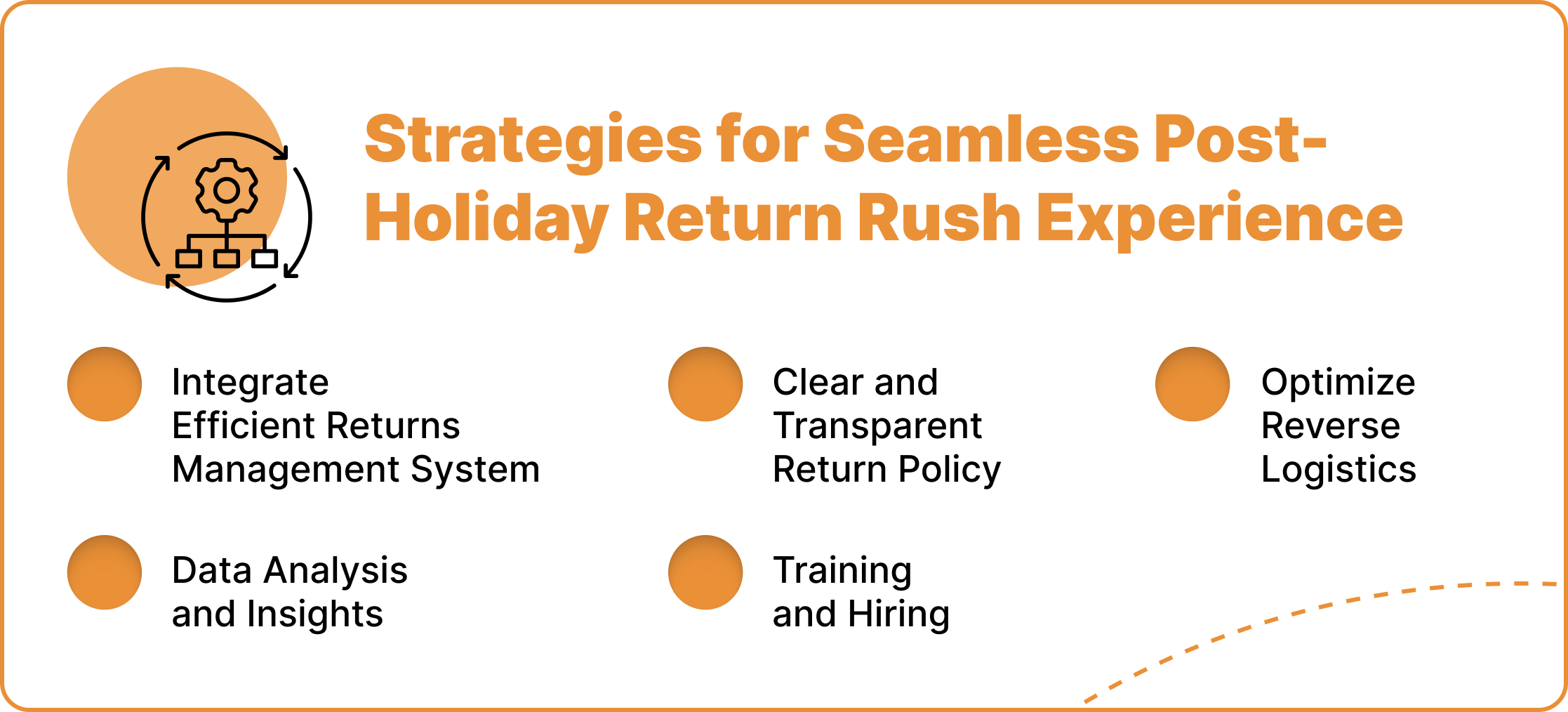Strategies for Handling Post Holiday Returns Rush

The holidays are always great. For customers, it means more time to spend with their family and friends and, more importantly, an excuse to shop. For businesses, it means more sales. Unfortunately, when the holiday sales rush subsides, the post-holiday surge of product returns can be challenging. However, managing these returns efficiently can significantly reduce their impact on your business. Analyzing returns data is crucial to improving the returns process and making informed decisions about stock levels.
In 2023, $173 billion worth of products were returned in a post-holiday return rush, which came after the massive success that saw way more goods sold in a single holiday season since the pandemic. This shows that the more sales a business makes, the more exposed it is to customer returns on average.
While returns can rattle retailers, they should not overwhelm their business. There are strategies for handling post-holiday return rush that can keep retail operations resilient to returns, and allied losses. This article will explore some of these measures.
Proactive Measures To Minimize Returns This Post-Holiday Season

The best returns are the ones that never happen. So, while we are exploring how to ensure a smooth return process, there are a few measures that can be taken to minimize or eliminate these returns altogether.
1. Accurate Product Descriptions and Images
56% of customers will return purchased products from online retailers because it is a poor fit. That makes poor product descriptions one of the major reasons for returns in this digital age. The holiday season comes with a lot of sales and less scrutiny from customers, especially those in a hurry for these products.
Businesses looking to avoid massive returns will do well to ensure better product descriptions throughout their website or online store. That way, fewer customers make mistakes, prompting fewer returns. A few tips to accomplish this involve providing detailed and realistic product information to manage customer expectations and also using high-quality images and videos to showcase products from different angles.
2. Clear Sizing and Fit Guides
Although customers generally return products across all categories, some of the most returned items are those under the fashion category. The primary reason for this is the size and fit. Customers will buy, thinking they are one size, only to find out they are another. It may not be the business’s fault, but it will suffer the consequences. The ideal solution here is to reduce the impact, which may entail offering comprehensive sizing charts and fit guides to help customers choose the right size or consider virtual try-on or fit recommendation tools.
3. Pre-Purchase Customer Support
Although the option of returning items makes the customer comfortable, a significant number of them would rather not return. Many of them would do their due diligence, including research and inquiries, to avoid that. To help them with these, it is important to have a team on standby that can be of service to them.
The team can provide customer support to answer questions and address concerns before purchase. It would also be smart to consider live chat, email support, or phone assistance.
Strategies for Seamless Post-Holiday Return Rush Experience

The trick to handling the post-holiday return rush is through preparation. When businesses fail to do this, they often struggle to process and coordinate customer returns, potentially collapsing the existing reverse supply chain infrastructure. The following strategies will help ensure that this is not the case:
1. Integrate Efficient Returns Management System
The return management system is a technology solution that streamlines the entire returns process for customers and staff. Through the returns system, any business can implement a more friendly process for both parties. Customers can access portals that allow them to initiate the return process and track their products seamlessly throughout the reverse logistics and return operations.
With this system, they can also generate auto return labels for easy shipping and have access to all the information they need to guide them through the returns process. This includes the return and refund policy on certain items (store credit and cashback). On the back end, these systems help the team effectively process and sort the returned items into necessary categories.
2. Clear and Transparent Return Policy
The return policy keeps customers informed about the guidelines and acceptable structures for their returns. It tells the customer what goods can be returned, the acceptable state of returns, and the timelines for these returns. However, for the return policy to work, it must be consumer-friendly. This means clarity, transparency, fairness, and positioning.
For example, consider using a structure easily understood by customers across all categories when writing the return policy. This way, more customers understand the information being shared. It is also important to position the return policy where customers can easily locate it. It is counterproductive to write a well-meaning return policy and make it challenging for customers to find it.
Finally, the return policy should be transparent and fair. This means not writing down things the business cannot deliver and not penalizing customers for returns that are not their fault. Eight in ten customers say that free shipping is an important consideration. That should guide the return policy but applies differently to various industries.
3. Optimize Reverse Logistics
If logistics bridges the gap between supply chains and customers, reverse logistics is the singular pathway between them. In a post-holiday return rush, it is important to ensure that the reverse logistics infrastructure doesn’t get overwhelmed by all the returns. Despite the efficiency of the main logistics operation, if reverse logistics fails, it could impact the customers’ opinion of the business. However, if it is a success, it could drastically improve customer loyalty.
To optimize the reverse logistics process, ensure that the logistics provider can handle increased returns well and that there are dedicated vehicles to make it possible. Also, ensure that the logistics provider is well-integrated for seamless communication. This will significantly enhance the flow of information, leading to improved efficiency in the entire process. It will also pay to consider the following: pre-paid return labels and designated drop-off locations.
4. Data Analysis and Insights
Returns data will play a significant role in managing the post-holiday return rush because it allows the retailer to analyze the information contained and leverage that to identify trends, understand customer behavior, and take measures that ultimately help optimize the entire returns process. Returns data can be obtained through customer feedback, surveys, and general information from processing returns.
Tracking key metrics like return rate, reasons for returns, and associated costs through the returns management solution will help businesses leverage returns data effectively. This will allow them to identify potential problems and easily mitigate them through data-driven decisions for a hassle-free returns process and customer experience.
5. Training and Hiring
The sheer volume of returns during the post-holiday return rush can overwhelm the staff. It may be prudent to hire temporary staff to help during this period. However, a non-negotiable is staff training. Considering the various challenges and propensities for mistakes, it will be critical to retrain staff on the do’s and don’ts, including how to handle or navigate the Returns Management System.
Training and hiring can significantly improve the throughput of the entire process and enhance customer satisfaction. The efficient inventory management it provides will also help prevent losses.
How ReverseLogix’s RMS Platform Ensures a Seamless Post-Holiday Return Rush
The ReverseLogix RMS platform will assist your business in effectively handling the post-holiday return rush through a comprehensive solution that manages returns, streamlines processes, and provides valuable insights from return data.
This way, your business can:
- Centralize returns management by connecting customer-facing portals with commerce platforms and warehouse operations for visibility and control.
- Standardize warehouse workflows by allowing businesses to configure workflows for efficient inspection, grading, and put-away of returns, maximizing recovery and minimizing manual work.
- Optimize warehouse operations through centralized operations with standardized analytics and reporting. This will streamline the entire reverse logistics process and provide real-time data from facilities worldwide.
Are you ready to give it a try? Get a demo with us today.
Frequently Asked Questions
The holidays will often lead to a surge in gift-giving and impulse purchases. However, after the festivities, many realize they received unwanted or duplicate gifts or simply experience buyer’s remorse, leading to higher returns.
There are a few ways, but the most common are thorough inspections, establishing clear guidelines for sorting the items, and maintaining quality control standards that ensure only products in good condition are returned to inventory.
The following will help:
Empathy and understanding: Train the staff to listen actively, acknowledge customer concerns, and offer solutions in a friendly and professional manner.
Flexibility: Be willing to go the extra mile to accommodate customer requests within reason.
Timely resolution: Strive to resolve issues promptly and efficiently to minimize customer frustration.
Remember that these processes can also help improve customer lifetime value beyond ensuring satisfaction.
